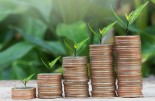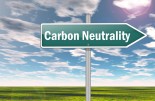Scientific Beta: Does a ‘Green Premium’ exist in Infrastructure Investment?

By Noël Amenc, Associate Professor of Finance at EDHEC Business School and Senior Advisor at Scientific Beta, and Frédéric Blanc-Brude, Director, EDHECinfra
In recent research[1], we have shown that there is empirical evidence of historical outperformance of green infrastructure investments (defined narrowly as wind and solar power projects). The question is whether this finding implies continued future outperformance.
In line with the literature, we argue that more sustainable infrastructure investments should in fine have lower expected returns than less sustainable ones, but that the recent shift in investor preferences in favour of greener power investments has temporarily created excess demand, explaining realised performance during the past decade.
Transition risk strengthens the case for green investments
The premise that green investments may have different returns than brown ones partly springs from the notion of climate ‘transition risk’: the expectation of higher future costs or lower future revenues for firms that emit greenhouse gases due to new regulations and shifts in consumer behaviour. However, the manner, timing and magnitude with which transition risks may materialise have been and remain largely unknown to investors. Today, it can seem unlikely that asset prices already fully reflect these risks when they remain very hard to assess and quantify.
When it comes to renewable energy projects and their fossil-fuel (coal and gas) equivalents, however, the writing is already on the wall: wind and solar projects will be impervious to carbon taxes and coal and gas will not. In effect, coal projects are already being divested and phased out by large utilities, implying that their future value is considered to trend towards zero.
This knowledge has already impacted asset prices in the case of green and brown power investments. The gradual realisation by investors that they have an increasing preference for green power investment and want to hold less conventional power investment has taken place over the past decade.
Large investors are already divesting from brown investments
In our 2022 survey of about 350 large investor portfolios of infrastructure assets, EDHECinfra found not only that renewable energy corresponds to between one quarter and one third of investors’ infrastructure holdings by value at the end of 2021, but also that conventional gas and coal power projects represent as little as 1 to 3% of their portfolio, with the notable exception of North American investors, who hold 10% of their infrastructure investments in brown power assets.
In other words, brown power investments have largely been divested by mainstream investors already and green ones have already been integrated into portfolios on a significant scale. The shift in demand for green and brown power assets has already occurred.
One might add that higher demand for green power is not the only possible reason for the yield compression observed. For instance, infrastructure investment has been characterised by a significant evolution in the nature of investors valuing such assets, with the principal market increasing in size and scope and new cohorts of buyers and sellers showing increasing comfort with long-term, illiquid investments. In other words, a new generation of investors arose that had different risk preferences from previous generations of investors in infrastructure equity, such as construction firms, who faced higher hurdle rates.
Past performance of green and brown investments
In 2011, green power projects had expected returns of ~8% and brown power projects of ~9%. Their 10-year annualised total returns in 2021 were 16% and 17% respectively. These two figures may seem related, but correspond in fact to very different economic fundamentals. The high historical performance of green power is explained by a significant compression in yields (expected returns), especially between 2012 and 2015, and the corresponding capital gains.
Conversely, the performance of brown power was more driven by cash returns and less by yield compression. In effect, unlike other infrastructure investments, brown power investments have seen a slight increase in their expected returns since 2018.
Hence, we find that the impact on performance of such shifts in the demand for green and brown investments cannot be equated with the appearance of a new ‘green’ asset pricing risk factor. Instead, as predicted by theory (see Pastor et al., 2021), demand shocks have led to relatively high realised performance in the green power market but also lower expected returns.
Will green continue to outperform brown?
For this situation to persist, there needs to be continued disagreement in the market about the future value of greener investments. Once all investors agree about the future value of greener or less green investments, investors are left holding the market portfolio, which includes current and future preferences for greener assets.
Going forward, as excess demand for green power investments is gradually met with additional supply of green power assets and effective allocations to green power become significant, our findings suggest that both the realised and expected returns of green power investments can be expected to converge.
Such a convergence, which reflects a long-term pricing equilibrium, leads us to conclude that there is no reason for superior performance by green infrastructure investments to continue. The so-called ‘green premium’ observed in the past does not correspond to the reward for a superior risk factor but instead to a temporary phenomenon of excess demand, which the supply side of the market eventually satisfied.
[1] Amenc, N., and F. Blanc-Brude, ‘The Pricing of Green Infrastructure,’ April 2022, EDHEC Infrastructure Institute Publication.
References
- Amenc, N., and F. Blanc-Brude, The Pricing of Green Infrastructure, April 2022, EDHEC Infrastructure Institute Publication.
- Blanc-Brude F., W. Schmundt, T. Bumberger, R. Friedrich, B. Georgii, A. Gupta, L. Lum, and M. Wilms (2022). Infrastructure Strategy 2022. Boston Consulting Group & EDHECinfra.
- Pastor, L., R. Stambaugh, and L. Taylor (2021). Sustainable Investing in Equilibrium. Journal of Financial Economics 142 (1), 550-571.










